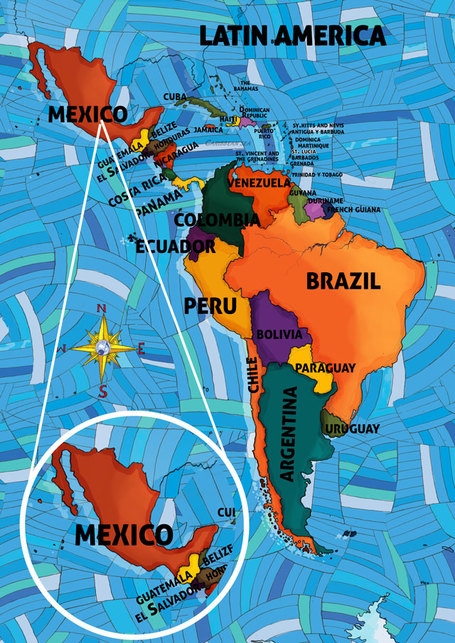Mexico
Mexico

|
In Mexico, music can surely be a meaningful expression of one’s cultural and historical heritage, but it can also be just plain fun. Mexican music has thousand of years of history behind it, but that doesn’t make it stale. Actually, music in Mexico is ever-evolving, and Mexican musicians aren’t shy about forging new territory, even while remembering their cultural home base.
Mexican music has blended with forms from the Southwestern United States, especially Texas, where “tejano” music mixes both Spanish and Texan instruments and sounds. While many Mexican musicians base their music in tradition, there are also thriving modern music scenes through the country — rock, pop, punk, hip-hop, techno…any music, anywhere, has a home in Mexico. |
Learn about Mexico
|
|
|
|
|
|
Kids Try Mexican Snacks |
Kids Meet a Luchador |
Kids Try Día de los Muertos Food
Music of Mexico
Mariachi Music
|
If you've ever eaten in a Mexican restaurant, or visited Mexico, you may have heard Mariachi music. Mariachis know literally hundreds of songs. Most traditional mariachi songs are about machismo, love and romance (or lost loves), betrayal, death, politics, or revolutionary heroes. Stemming from its rural origins, some songs feature animals and life in the country (el campo).
Mariachi music originally comes from the state of Jalisco, Mexico. It began as indigenous musicians began to incorporate Spanish instruments, and work on haciendas as entertainment. As the haciendas began to shrink and musicians were let go, they wandered and would play for a fee. Mariachis began to use the charro (Mexican cowboy) costume in the early 1900s. The music slowly evolved from peasant folk songs to an iconic status symbol of Mexico. |
|
Traditional Mexican Dances
|
|
Jarabe Tapatio | "Mexican Hat Dance"
The Jarabe Tapatio, also known as the Mexican Hat Dance, is the most popular folk dance to ever spring out of Mexico. Considered to be the nation's official dance, many learn this as children and continue to dance it at festivals and birthday parties.
|
|
|
El Baile de Los Viejitos | Dance of the Old Men
El Baile de Los Viejitos, the dance of the old men, was originally written to mock the Spanish upper class. The men traditionally dance with machetes and masks, while the women move with fans. |
|
|
Concheros
This is a religious dance that portrays some of the rituals that were conducted by the pre-Columbian Aztecs. Named after a stringed instrument constructed from armadillo shell, the dance pays homage to the four elements of earth, air, fire, and water. |
|
|
Danza de los Voladores
Danza de los Voladores, or Dance of the Flyers, is a unique style of dance where the dancers start out on top of a high pole and then hang upside down tethered to ropes attached to their ankles as they are lowered to the ground while circling the pole. Also known as the Mexican pole dance, this ritual dance is traditionally performed by five men: the musician, who remains at the top of the pole playing a flute and drum, and the four "flyers." |
